Letter written 215 years ago by Admiral Lord Nelson sells for £10,000 at auction

A 215-year-old letter written by Admiral Lord Nelson the year before his death has sold at auction for £10,000.
The handwritten, signed note was written in October 1804 and sent to Sir John Acton – the then prime minister of Naples and expressed Nelson’s financial fears for his future.
It demonstrates the British officer's concern about his expectation that the British Navy would continue to fund his life once the Napoleonic Wars – a series of global conflicts fought during Napoleon Bonaparte's imperial rule over France (1805–1815) – had ended.
The letter is headed “Victory”, and dated 8 October 1804, while the British fleet were blockading the French at Toulon, and is signed "Nelson and Bronte".
He wrote "should peace be established”, he would wish for a “certain income”.
Lord Nelson, lauded as one of Britain’s most heroic figures, was a British naval commander famed for his victories over the French during the Napoleonic Wars including the Battle of Trafalgar, where he was shot by a French sniper in 1805.
And, given the fame Nelson has gained for his victories, the letter proved a big draw when it went under the hammer at Reeman Dansie auctioneers in Colchester, Essex.
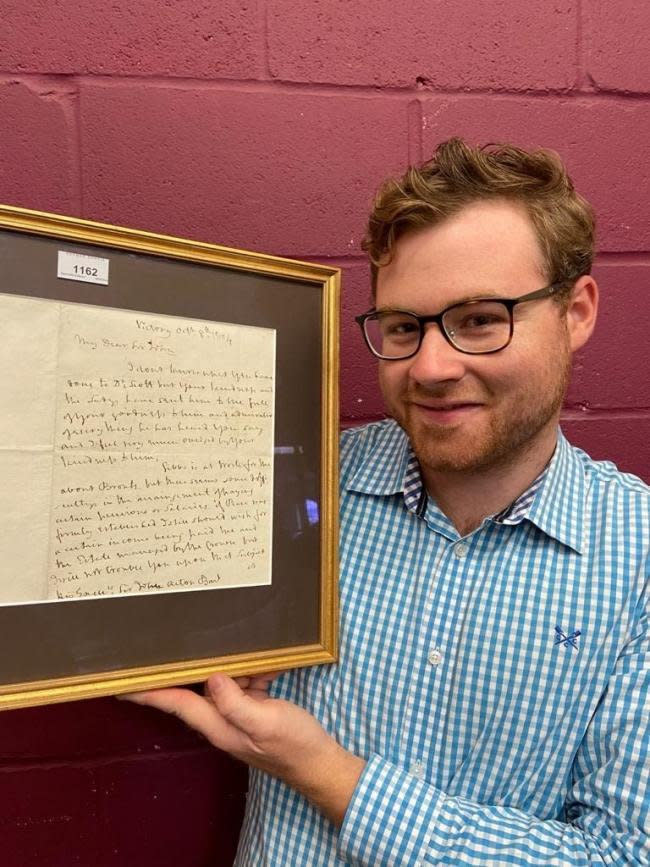
The letter was eventually purchased for £10,000 by a collector, who has not been identified.
Lewis Rabett, an auctioneer and valuer at Reeman Dansie, said: "It made £10,000 which was the top end of what we had thought.
"We are very pleased with what it did and the seller, a man from the Midlands, was too.
Read more: Anti-racism campaigners target Nelson's Column as next statue that should be removed
"Back in 2013 it made £7,000, so the seller made £3,000 after enjoying it for seven years."
"The bidding started at around £6,000 and there were two telephone bidders. It crept up and up, one against the other, before it got to £10,000.
"It was a very good object to be able to sell. It is nice to be have something so historic in our auction house."
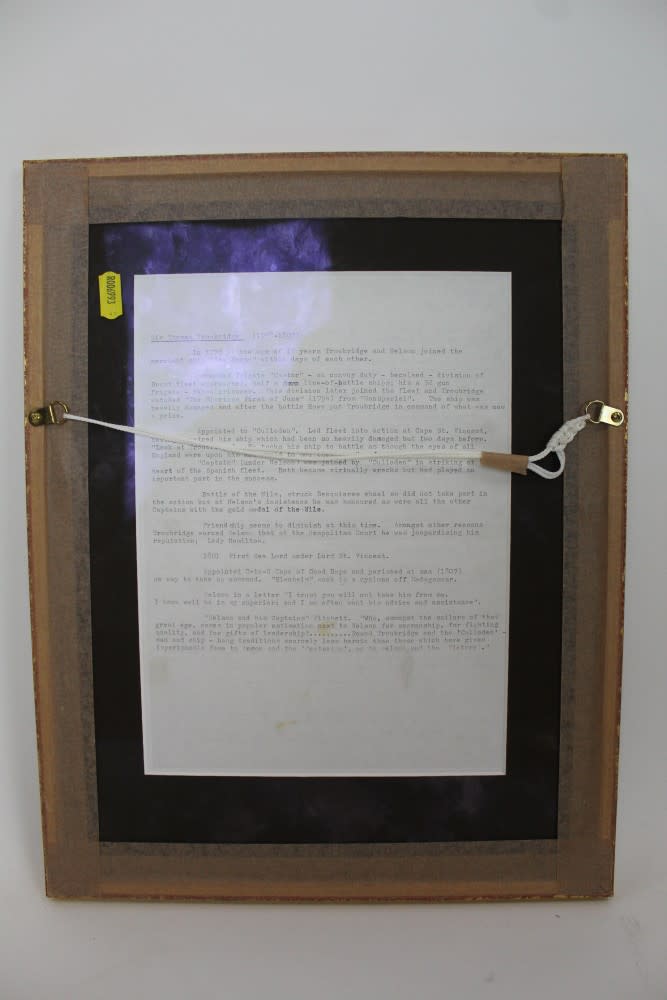
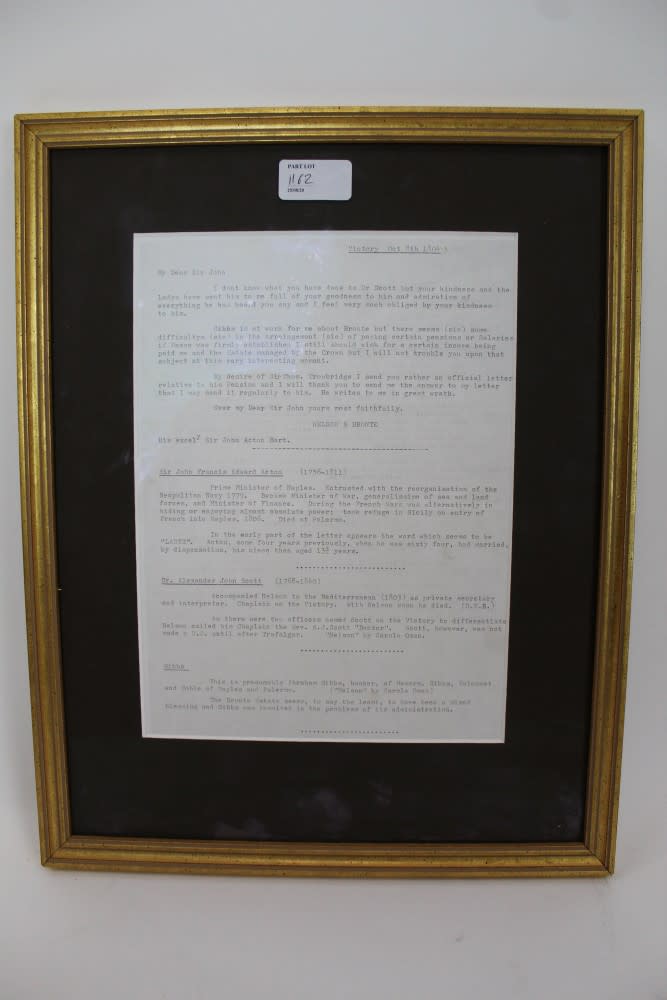
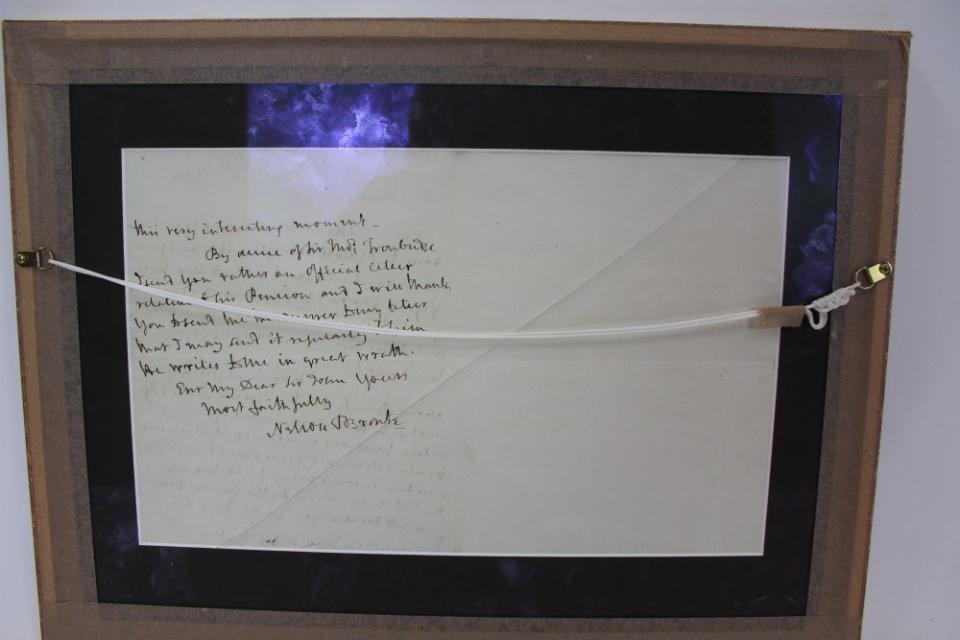
The letter mentions Dr Scott, who famously attended to Lord Nelson’s fatal wounds at the Battle of Trafalgar.
It was sent just over a year before his death on 21 October 1805 – which was 10 years before the Napoleonic Wars eventually ended.
Read more: Three locks of Lord Nelson’s hair fetch more than £5,000 at auction
Experts had put an official valuation of between £7,000 and £10,000 on the letter.
In July, three locks of Lord Nelson’s hair sold for more than £5,000 – well above their reserve price of £2,000.
Keys Auctioneers and Valuers of Aylsham in Norfolk said the rare items were part of a Nelson collection belonging to the late historian Ron Fiske.
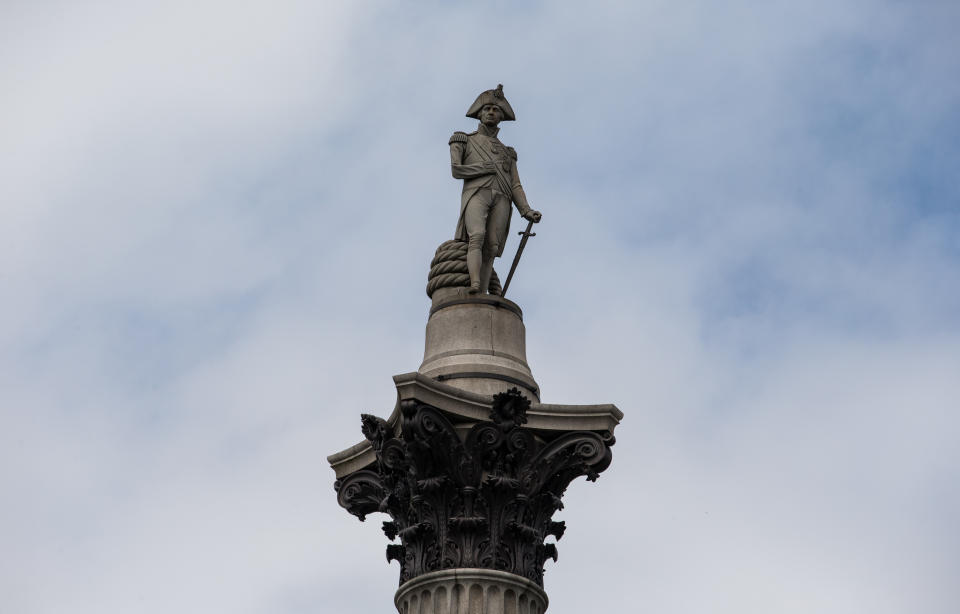
The items were sold to a "private UK collector" but set to stay in this country, the auctioneers said.
Fiske, who died in 2018, was an inaugural member of the Nelson Society and served as its chairman for nine years.
The locks were kept in paper packets, with the first packet inscribed in ink ‘The hair of Horatio Lord Nelson, given me by Horatia, 22 May 1818’.
The second packet, which contains two locks, says ‘The great Lord Nelson hair cut off when he left off tying his hair’.

 Yahoo Sports
Yahoo Sports 